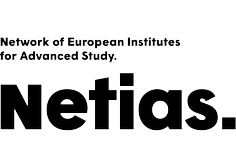Dr. Yury Belyi
Microbiology
External Senior Fellow (Marie S. Curie FCFP Fellow)
March - Arpil 2018
CV
I was born in Moscow, Russia (14.11.1960). During 1976 – 1983 I studied medicine at Pirogov Medical University, Moscow, Russia. After graduation in 1983 I got post-graduate position at Gamaleya Research Institute of Epidemiology and Microbiology, Moscow, Russia. In 1987 I successfully finished my PhD thesis “Characterization of a cytolysin produced by Legionella pneumophila”. In 2000 I got my second doctorate degree with a thesis “Role of protein molecules in intracellular parasitism of Legionella and Listeria”. Since 2000 I am a head of the laboratory of molecular pathogenesis, and since 2009 – a head of the department of bacterial infections at Gamaleya Research Institute. My areas of interest are microbiology, molecular biology, infectious diseases, bacterial virulence mechanisms, toxins and molecular mechanisms of their activities. I am a member of American society for microbiology, American society for biochemistry and molecular biology, The American association for the advancement of science as well as a member of the scientific council at the Gamaleya Research Center. I am married and have one boy, also a scientist.
Selected Publications
- Belyi Y., Niggeweg R., Opitz B., Vogelsgesang M., Hippenstiel S., Wilm M., Aktories K. Legionella pneumophila glucosyltransferase inhibits host elongation factor 1A. PNAS USA, 2006, 45: 16953–16958.
- Belyi Y, Tabakova I, Stahl M, and Aktories K. Lgt: a family of cytotoxic glucosyltransferases produced by Legionella pneumophila. J. Bacteriol. 2008, 190:3026-3035.
- Belyi Y., Stahl M, Sovkova I., Kaden P., Luy B., and Aktories K. Region of elongation factor 1A1 involved in substrate recognition by Legionella pneumophila glucosyltransferase Lgt1. Identification of Lgt1 as a retaining glucosyltransferase. J.Biol.Chem. 2009, 284: 20167-20174.
- Belyi Y, Tartakovskaya D, Tais A, Fitzke E, Tzivelekidis T, Jank T, Rospert S, Aktories K. Elongation factor 1A is the target of growth inhibition in yeast caused by Legionella pneumophila glucosyltransferase Lgt1. J Biol Chem. 2012 Jul 27;287(31):26029-37. doi: 10.1074/jbc.M112.372672.
- Belyi Y, Jank T, Aktories K. Cytotoxic Glucosyltransferases of Legionella pneumophila. In: Molecular mechanisms in Legionella pathogenesis. Springer-Verlag Berlin, 2014, 211-2262. DOI: 10.1007/82_2013_338.
FRIAS Research Project
Molecular mechanisms of alteration in eukaryotic membrane trafficking induced by Legionella pneumophila, vacuolar pathogen of phagocytic cells
Legionella pneumophila is a fastidious Gram-negative bacterium able to multiply inside eukaryotic cells and causing severe pneumonia in humans. To succeed in intracellular pathogenesis bacteria translocate numerous toxic substances, called “effectors”, into target cells. In many known cases, these Legionella products participate in the change of the phagosome into a “replicative vacuole” by targeting small GTP-binding proteins, which are regulators of vesicular and membrane trafficking including autophagy processes. However, obviously, many aspects of the interaction of Legionella with host membranes still remain unknown. In our unpublished investigations we identified an open reading frame (“lpg1489” in L. pneumophila genome database) whose product was severely toxic when produced in yeast Saccharomyces cerevisiae and induced characteristic vacuolar phenotype been delivered into mammalian cells. Obtained data suggested that this novel protein is able to interact with host membranes by unknown mechanism and induces definite alterations in eukaryotic vacuole biogenesis. The current proposal is aimed at study of Lpg1489 by using different cell biological, proteomic, biochemical and molecular biological approaches. The obtained results will help to disclose type of biochemical activity of Lpg1489, identify the target(s) and consequences of its action for the host cell.





